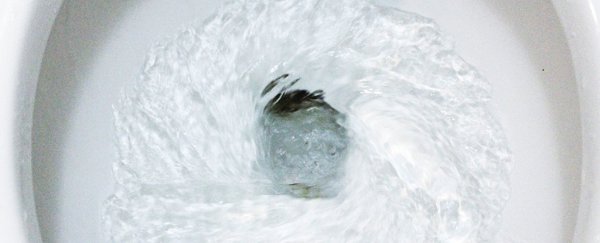When it comes to cutting water consumption to be kinder to the planet, changing the coating on your loo might not be the first step you think of – but a team of scientists has given this some very serious consideration indeed.
They've come up with a new type of coating that means a toilet could be flushed with around 60 percent of the amount of water used as standard at the moment, and cleaned with just 10 percent.
Considering that more than 141 billion litres (37 billion gallons) of fresh water are used globally each day for toilet flushing, that's a lot of water that could be saved.
"Our team has developed a robust bio-inspired, liquid, sludge and bacteria-repellent coating that can essentially make a toilet self-cleaning," says mechanical and biomedical engineer Tak-Sing Wong, from Pennsylvania State University.
The coating can be applied to existing surfaces using two applications of a spray. The first grows microscopic hairs on the surface of the toilet bowl, while the second adds a layer of lubricant on top.
This tackles the main problem with poop, from a cleaning perspective – it tends to be rather sticky. Testing the coating with synthetic fecal matter developed in the lab, the researchers found that 90 percent of the fake faeces just slipped right off the surface.
The researchers also tested the coating with real poop – anonymously donated – and found the results were just as good. Even better, the slippery layers were able to effectively repel bacteria at the same time, which means fewer chemicals would be needed for cleaning.
The coating, which the team is calling liquid-entrenched smooth surface (LESS) coating, can be applied in minutes and lasts for around 500 flushes. As well as reducing water use at home, it could also make public toilets more pleasant to use.
Then there's the developing world, where waterless toilets using some kind of trapdoor system are used – applying the LESS coating would mean these loos would require much less in the way of maintenance and cleaning.
With water supplies now under strain across a quarter of the inhabited world, finding new ways to reduce usage and redirect water to the places that need it the most is going to be more and more important.
Some potential challenges still need to be overcome. When the coating was hit directly with water or faeces for example, it wore out much more quickly, and needed replacing around every 10-50 flush cycles.
Meanwhile, materials scientist Mark Miodownik from University College London, who wasn't involved in the research, was supportive of the work but says there are still questions to answer.
"As this paper shows, such toilets would need less water per flush to clean them and also increase toilet hygiene," Miodownik told the Guardian.
"My one worry, which I'm sure the scientists will address as they do further work, is what happens to the coating when it does wear away through use – how would chemicals involved affect the environment if adopted globally?"
The researchers are now creating a startup company to try and get the non-stick spray commercialised and out in the world. It's possible that the coating could be in widespread use before long.
"Our goal is to bring impactful technology to the market so everyone can benefit," says Wong. "To maximise the impact of our coating technology, we need to get it out of the lab."
The research has been published in Nature Sustainability.
